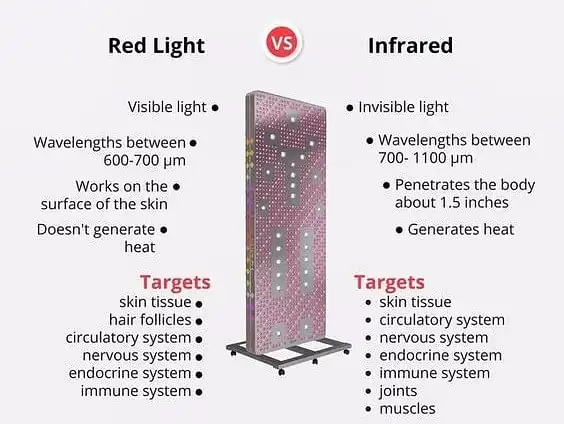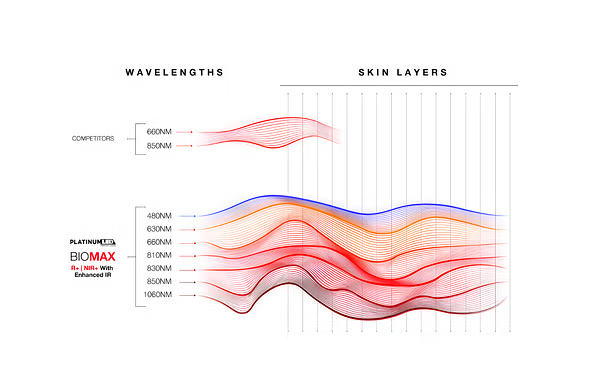
Red Light vs Infrared
Red light therapy has become an increasingly popular treatment option for a variety of health conditions. But what exactly is red light therapy and how does it work? This blog post will explore the science behind red light and its many potential benefits.

What is Red Light Therapy?
Red light therapy involves exposing the body to low wavelength red light for therapeutic benefits. This type of light is natural and can be produced by LED devices. Red light ranges in wavelength from 600-700 nanometers and is part of the visible light spectrum. It works by being absorbed into the mitochondria of cells, which then produce more ATP energy.
There are two main types of natural red light used in treatment:
Red Light
- Visible Red Light
- Wavelength between 600-700 nm
- Works on the surface of the skin
- Doesn’t generate heat
- Targets:
- Skin tissue
- Hair follicles
- Circulatory system
- Nervous system
- Endocrine system
- Immune system
- Targets:
Infrared Light
- Invisible light
- Wavelength between 700-1100 nm
- Penetrates body up to 1.5 inches
- Generates heat
- Targets:
- Skin tissue
- Circulatory system
- Nervous system
- Endocrine system
- Immune system
- Joints
- Muscles
- Targets:
The Benefits of Red Light Therapy
There are many potential benefits associated with red light therapy. Here are some of the ways it may improve health:
- Increased energy and reduction of fatigue
- Anti-aging benefits for skin
- Wound healing
- Hair growth
- Building of collagen and elastin
- Reduced inflammation and joint pain
- Improved circulation
- Muscle recovery after exercise
- Neurological benefits like reduced depression
- Strengthened immune system
Research continues to uncover the many ways red light can improve cellular function and optimize health. Although more studies are still needed, current research points to red light therapy as a promising treatment for an array of conditions.
